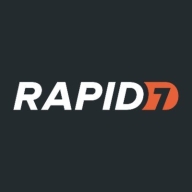

VMware Aria Automation and Rapid7 InsightCloudSec compete in the cloud management and infrastructure automation sector. VMware Aria Automation has an edge in pricing and support, while Rapid7 InsightCloudSec's superior features make it a more valuable investment.
Features: VMware Aria Automation offers comprehensive cloud management, strong integration capabilities, and advanced automation functionalities. Rapid7 InsightCloudSec provides robust security features, compliance monitoring, and dynamic scalability, focusing on security and compliance.
Room for Improvement: VMware Aria Automation could improve its deployment simplicity and enhance out-of-the-box security features. It might also benefit from more intuitive user navigation and faster integration processes. Rapid7 InsightCloudSec may need enhancements in cost optimization, user interface customization, and integration with third-party automation tools to expand its user base.
Ease of Deployment and Customer Service: Rapid7 InsightCloudSec excels with streamlined deployment and focused customer support, simplifying implementation. VMware Aria Automation's deployment is more intricate due to extensive features but offers reliable customer service.
Pricing and ROI: VMware Aria Automation has a lower setup cost, attracting budget-conscious buyers, providing satisfactory ROI through automation. Rapid7 InsightCloudSec, while having a higher initial cost, justifies the investment with superior features and better long-term ROI.


Rapid7 InsightCloudSec is a comprehensive CSPM tool catering to cloud security across Docker and Kubernetes workloads, ensuring rigorous data classification and protection, focusing on AWS and Azure platforms.
Organizations leverage Rapid7 InsightCloudSec for securing cloud environments, integrating smoothly into Kubernetes settings for extensive security oversight. This tool addresses data protection with governance and access controls, providing centralized visibility and alert mechanisms. Users depend on its threat detection capabilities, easing data security management on AWS and Azure. The platform integrates automated processes and agentless scanning to foster an understanding of cloud security dynamics. Enhancements in CNAPP management and more intuitive interfaces could further streamline its use.
What are the most important features of Rapid7 InsightCloudSec?In financial sectors, Rapid7 InsightCloudSec is critical for safeguarding sensitive information and ensuring compliance. Healthcare industries use it to protect patient data, adhering to strict regulatory standards. E-commerce businesses appreciate its ability to secure transaction data while maintaining service availability through reliable threat detection and mitigation strategies.
VMware Aria Automation is a cloud management tool that allows companies to simplify their cloud experience through a modern automation platform. The solution is designed to deliver self-service clouds, multi-cloud automation with governance, and DevOps-based security and infrastructure management. It helps organizations improve IT agility, efficiency, and productivity through its various features.
VMware Aria Automation has multiple use cases that include the following:
VMware Aria Automation Features
VMware Aria Automation has various features that allow users to easily perform operations. Some of the solution's capacities include:
VMware Aria Automation Benefits
VMware Aria Automation offers its users various benefits. Some of the biggest advantages that the solution brings to companies that utilize it include:
Reviews from Real Users
Awais J., CTO/CEO at a tech services company, likes VMware Aria Automation because it saves a lot of time, provides more visibility, and has extensive automation capabilities.
An IT consultant at a government rates VMware Aria Automation highly because the product gives you flexibility to analyze and consume resources.
We monitor all Cloud Management reviews to prevent fraudulent reviews and keep review quality high. We do not post reviews by company employees or direct competitors. We validate each review for authenticity via cross-reference with LinkedIn, and personal follow-up with the reviewer when necessary.